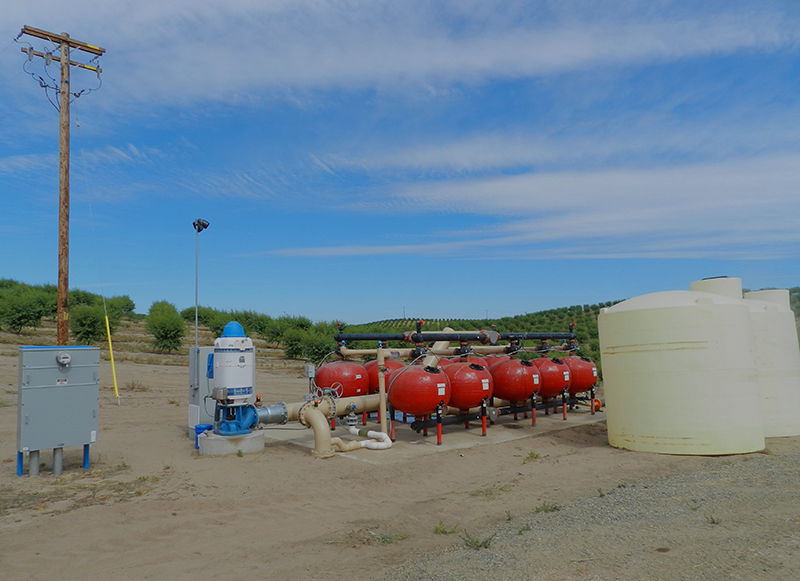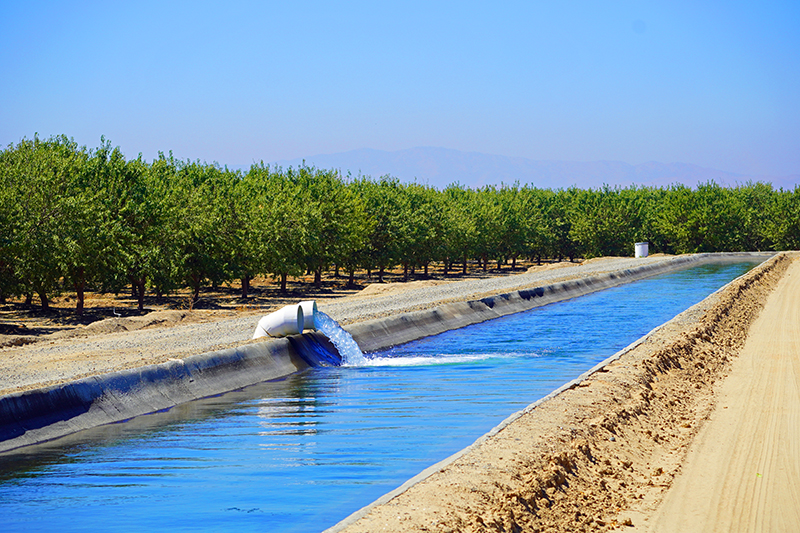The late Vance Kennedy was appalled when he learned tens of thousands of groundwater-dependent acres had been planted with almond orchards in the foothills on Stanislaus County’s east side.
“That groundwater is our savings bank,” said Kennedy, then a resident of the City of Modesto. “That’s our reserve in case of an extended drought.”
Kennedy, an award-winning hydrologist and geologist during his career at the U.S. Geological Survey, thought the thirsty almond orchards could ultimately threaten the viability of the entire Modesto Subbasin, which supplies water to cities throughout the county. In fact, the only city in the county that receives significant volumes of surface water is Modesto, which still relies on groundwater for almost half its needs. Cities like Oakdale, Riverbank and Waterford rely solely on groundwater.
At the time, over ten years ago, the State of California was one of the few in the nation that had no groundwater management plan. Shortly thereafter, on September 16, 2014, Governor Jerry Brown signed into law the Sustainable Groundwater Management Act (SGMA).
Kennedy’s hopes for wiser water use rose a bit after SGMA, and he was initially optimistic when the Stanislaus County Water Advisory Committee began meeting in December of that same year. Its mission statement suggested a mandate “to identify and develop programs and practices that ensure a reliable and sustainable groundwater supply…and to make recommendations to the County Board of Supervisors to adopt public policy that empowers such identified actions.”

After over a year of attending meetings, Kennedy’s hopes waned. SGMA regulations had given authorities throughout the San Joaquin Valley over twenty years to achieve groundwater sustainability, even though many Valley aquifers were already severely depleted. The aquifer in Stanislaus County’s eastern foothills was one of the last viable groundwater sources in the Valley; Kennedy feared it would be severely depleted before authorities could act in time. He didn’t see what he considered an appropriate sense of urgency on the water committee. He felt the aquifer was a lost cause.
While the water advisory committee theoretically has influence on local water policy, the task of developing the official Groundwater Sustainability Plan (GSP) in the Modesto Subbasin falls to the Stanislaus and Tuolumne Rivers Groundwater Basin Association (STRGBA). Members of STRGBA include the Cities of Modesto, Oakdale, Riverbank and Waterford, as well as Stanislaus County. Modesto and Oakdale Irrigation Districts are also members. Together, these entities form the official Groundwater Sustainability Agency (GSA) for the Modesto Subbasin.

Last month, the California Department of Water Resources (DWR) notified the association that its current sustainability plan “does not satisfy the objectives of the Sustainable Groundwater Management Act (SGMA) nor substantially comply with the GSP Regulations.”
In rejecting STRGBA plan, DWR warned that unless the agencies can develop an acceptable alternative, the state may have to intervene. Among the more alarming details in the DWR report was the discrepancy between STRGBA’s projected baseline overdraft estimates and actual overdraft figures reported to DWR for 2021 and 2022:
“…negative change in groundwater storage (i.e., overdraft) reported for water year (WY) 2021…was -132,500 acre-feet (AF) and -172,300 AF for WY 2022. In contrast, the GSP’s estimate of projected overdraft is more than 10 times less at only 11,000 acre feet per year (AFY)…Assuming Plan implementation proceeds according to the modeled scenario, the expected cumulative effect to groundwater in storage would be an increase of 70,000 AF over the 50-year period. However, this projected maximum gain in storage is less than a quarter of the storage loss reported to have been experienced…in just two years of annual reporting (i.e., a cumulative loss in groundwater storage of 304,800 AF).”
While most citizens are aware that wells have been going dry throughout the Valley for over a decade, the loss of 304,800 acre feet of water in only two years in one basin has to come as a shock to most everyone. That kind of loss is especially disturbing when one considers the many out-of-basin water sales local districts and private parties have made in recent years, including drought years.

The sales have enabled local farmers to receive their water allotments at bargain prices, sometimes even below the cost of delivery. Justification for the sales has almost always been in terms of the belief that the exported water was “surplus” water. It’s now clear that those water sales, along with pumping throughout the basin, have come at the expense of a declining aquifer.
Anyone wishing to know the consequences unless STRGBA can devise and implement a plan for a sustainable aquifer need only look to the southern part of the Valley, where recent estimates indicate between five-hundred thousand and a million acres of farmland will have to be fallowed due to failed aquifers and diminishing supplies of surface water. The economic consequences of such losses will spread throughout the Valley, affecting most every resident.
As for the Modesto subbasin, STRGBA will have to produce an acceptable plan for sustainability soon or the state will intervene. Meanwhile, Vance Kennedy’s worst fear has yet to materialize, even though it seems more and more likely:
“What are we going to do when the state orders severe reductions and the farmers sue,” said Kennedy years ago. “They’ll keep pumping while everyone’s tied up in court.”
Kennedy’s initial fear — that Modesto’s aquifer would suffer serious decline — has already proven true. Local citizens have to hope there’s still a chance to devise a plan that will prevent the kind of catastrophe confronting their neighbors to the south. The costs are too dire to contemplate.

[…] Story continues […]
[…] Story continues […]
on this subject, we agree. Water sales outside of each irrigation district depletes the ‘reserve’ we need during droughts. And, to be sure, whenever the Govenor gets involved, he has the solution- send it all to the highest bidder , as long as he gets his cut of the proceeds. I was involved with electing two women to OID’s board 9 years ago, to try and stop the GM from selling water outside the district. It is time for this area’s public agencies to step up to keep the water here- as most of the cities in this area get their water from wells, some of which are replenished from the nearby river and some by irrigated water. THERE IS A LOT THAT CAN BE DONE, BUT IT TAKES DUE DILIGENCE. I met Mr. Kennedy during several of our meetings- we need more of him to help with this mess.